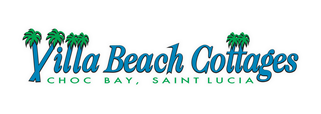
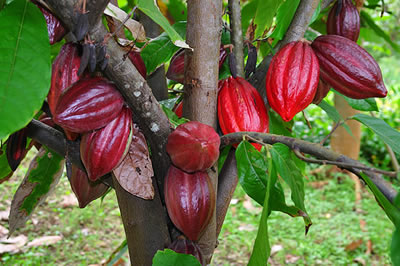 La Dauphine Estate dates back to 1713 when three brothers and French Militia Officers were ceded two thousand acres of lands in Soufriere by King Louis XIV of France for services to the French Crown. They left Martinique to become planters in St. Lucia. La Dauphine, which literally means “the wife of the heir to the throne of France” was a subdivision of the original two thousand acres. The plantation was sold to Gabriel Laffitte M.B.E. in 1890 and finally brought by Hamilton Gidharry in 1953. Although sugar cane was one of the original crops grown on the plantation by the 1820’s beet sugar became popular in Europe and many sugar estates were forced to grown alternative crops. Cocoa became the main substitute for sugar cane. La Dauphine Estate’s rich and fertile volcanic soil, high altitude and rainforest water all created a unique environment, perfectly suited to cocoa production, in which the cocoa trees flourished.
La Dauphine Estate dates back to 1713 when three brothers and French Militia Officers were ceded two thousand acres of lands in Soufriere by King Louis XIV of France for services to the French Crown. They left Martinique to become planters in St. Lucia. La Dauphine, which literally means “the wife of the heir to the throne of France” was a subdivision of the original two thousand acres. The plantation was sold to Gabriel Laffitte M.B.E. in 1890 and finally brought by Hamilton Gidharry in 1953. Although sugar cane was one of the original crops grown on the plantation by the 1820’s beet sugar became popular in Europe and many sugar estates were forced to grown alternative crops. Cocoa became the main substitute for sugar cane. La Dauphine Estate’s rich and fertile volcanic soil, high altitude and rainforest water all created a unique environment, perfectly suited to cocoa production, in which the cocoa trees flourished.
However the story of cocoa and its much loved by product chocolate has global journey spanning 3000 years. The journey brings with a tribe called the Olmecs who settled in Gulf of Mexico in about 1000 BC and who cultivated a plant they called “cacao” (kakawa). By 600AD the Mayans had taken over from the Olmecs and continued the cultivation of cocoa, which they considered a present from God and to them was a symbol of life and fertility. To maximize its usage they developed a bitter cocoa drink called “xocoatl” that was drank by the kings and aristocrats and for variation they would sometimes spice up the drink with herbs and hot chili pepper. Cocoa continued to grow in popularity and by 1200AD the Aztecs who had become the most dominant tribe in Mexico considered cocoa of great value, even more valuable than gold.
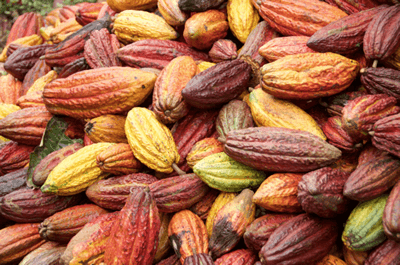 Cocoa was introduced to Europe after Christopher Columbus returned from his fourth voyage to the Americas in 1502. However it was Hernando Cortez who tried a chocolate drink in the court of Montezuma and was impressed by the fact that the Aztecs used the cocoa bean as currency, left Mexico with his own consignment and seeded plantations in the Caribbean and West Africa. He also presented it at the court of Queen Isabela and King Fernando of Spain. Cocoa, as it eventually became known, found favour at court and for more than a century was kept as a secret recipe by the Spanish. The only people allowed to process cocoa beans were monks. They added cinnamon, nutmeg and sugar, leaving out the chili that the Aztecs liked, and realized it was nicer served warm. However by the 17th century the use of cocoa spread throughout Europe.
Cocoa was introduced to Europe after Christopher Columbus returned from his fourth voyage to the Americas in 1502. However it was Hernando Cortez who tried a chocolate drink in the court of Montezuma and was impressed by the fact that the Aztecs used the cocoa bean as currency, left Mexico with his own consignment and seeded plantations in the Caribbean and West Africa. He also presented it at the court of Queen Isabela and King Fernando of Spain. Cocoa, as it eventually became known, found favour at court and for more than a century was kept as a secret recipe by the Spanish. The only people allowed to process cocoa beans were monks. They added cinnamon, nutmeg and sugar, leaving out the chili that the Aztecs liked, and realized it was nicer served warm. However by the 17th century the use of cocoa spread throughout Europe.
It was not until the 19th century when chocolate as we know it today began to develop. Conrad van Houten, a Dutch chemist, patented a method of pressing the fat out of the cocoa mass, which eventually yields cocoa powder and cocoa butter. He also created a method to enhance taste and colour during the production process by alkalization. The two inventions paved the way for Englishman John Fry who invented “pure” chocolate in 1847. In 1875 Daniel Peter, a Swiss manufacture using condensed milk created by Henri Nestle combined with cocoa powder created the first milk chocolate bar. Later, Rodolphe Lindt through the “conching” process he developed in 1879 gave chocolate its smooth texture and ability to melt on the tongue and chocolate, as we know it had arrived.
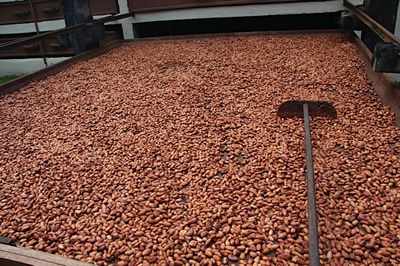 Many studies promoting the medicinal benefits of cocoa, as an antioxidant and for its serotonin boosting properties, coupled with the global appetite for all things chocolate, have again thrust cocoa into the limelight. Cocoa butter provides the finishing touch to a variety of food products ranging from high-end confectionary to cappuccino coffee and in the production of cosmetics and toiletries. Cocoa powder is used as the ideal flavouring agent of ice cream, dairy products, biscuits and sweets.
Many studies promoting the medicinal benefits of cocoa, as an antioxidant and for its serotonin boosting properties, coupled with the global appetite for all things chocolate, have again thrust cocoa into the limelight. Cocoa butter provides the finishing touch to a variety of food products ranging from high-end confectionary to cappuccino coffee and in the production of cosmetics and toiletries. Cocoa powder is used as the ideal flavouring agent of ice cream, dairy products, biscuits and sweets.
Despite the high-end chocolate products, the cultivation and processing of the cocoa fruit at La Dauphine Estate remains simple and earthy. We are a producer of the coveted Trinitario variety of cocoa. Trinitario is a hybrid of the aromatic Criollo and higher yielding Forastero nursery subspecies. Though larger quantities of cocoa are produced in West Africa, discerning chocolate producers and connoisseurs, prefer the St. Lucian Trinitario.
La Dauphine Estate situated in the lush forested heights of Soufriere, a place with a mystical aura given to it by the towering peaks of the landmark Pitons; two mountains once worshiped by the Amerindians as gods. It is also not surprising the botanist Linnaeus in his botanical classification system gave the cocoa tree the name Theobroma that means “food for the gods”. The growing conditions in 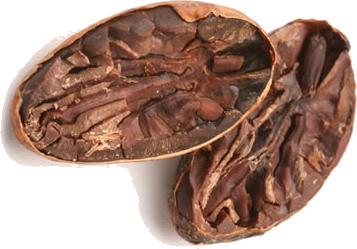 Soufriere are ideal, for this food for the gods, offering nutrient rich volcanic soil, high humidity, and the shade provided by the sub-rainforest vegetation preferred by the sun sensitive plant. Only 5% of the hundreds of tiny white and pink flowers on the cocoa plant achieve pollination, leading five months later to beautifully coloured cocoa pods. The pod, shaped much like a rugby or nerf ball, grows directly from the tree trunk, and is green until it matures to a ruddy red or sunburned orange yellow.
Soufriere are ideal, for this food for the gods, offering nutrient rich volcanic soil, high humidity, and the shade provided by the sub-rainforest vegetation preferred by the sun sensitive plant. Only 5% of the hundreds of tiny white and pink flowers on the cocoa plant achieve pollination, leading five months later to beautifully coloured cocoa pods. The pod, shaped much like a rugby or nerf ball, grows directly from the tree trunk, and is green until it matures to a ruddy red or sunburned orange yellow.
The procedure for processing cocoa is much the same as it was hundreds of years ago. It is a relatively labour dependent crop and is picked by hand using long staffed pole with a cutter at the end. The pods need to left to mature for 3 to 5 days afterpicking; this is believed to enhance the taste. The pods are collected and brought to a centralized processing area near our Cocoa House where each pod is split to reveal scores of seeds covered in a sweet milky film. Buckets of the beans are poured into wooden fermentation boxes and covered with banana leaves to begin the fermentation stage. The natural sugars in the pulp create a chemical reaction which generates heat and alcohol. The seeds are then raked out over our large retractable trays on trolley wheels of the Cocoa House for drying in the sun. Up to a few years ago cocoa dancers, bare foot, would polish the beans into a burnish in a rhythmic dance. However, this “dance” is no longer practiced and now once the film is completely dried, the beans are collected. The beans are then sorted, the highest quality undergo the transformation into some of the world’s finest chocolates.
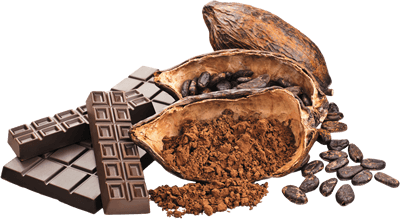 There are many famous chocolate manufacturers like Cadbury, Mars, Hershey, Nestle’ and Lindt but we are working closely with smaller independent chocolate manufacturer like Hotel Chocolat in the UK and local and international artisanal chocolate makers. Dark chocolate bars and chocolate coated almonds made exclusively from La Dauphine Estate cocoa are available both at Villa Beach Cottages and La Dauphine Estate. Chocolate tours with the bean to bar experience and a small chocolate factory & café’ will soon be available on the plantation.
There are many famous chocolate manufacturers like Cadbury, Mars, Hershey, Nestle’ and Lindt but we are working closely with smaller independent chocolate manufacturer like Hotel Chocolat in the UK and local and international artisanal chocolate makers. Dark chocolate bars and chocolate coated almonds made exclusively from La Dauphine Estate cocoa are available both at Villa Beach Cottages and La Dauphine Estate. Chocolate tours with the bean to bar experience and a small chocolate factory & café’ will soon be available on the plantation.
